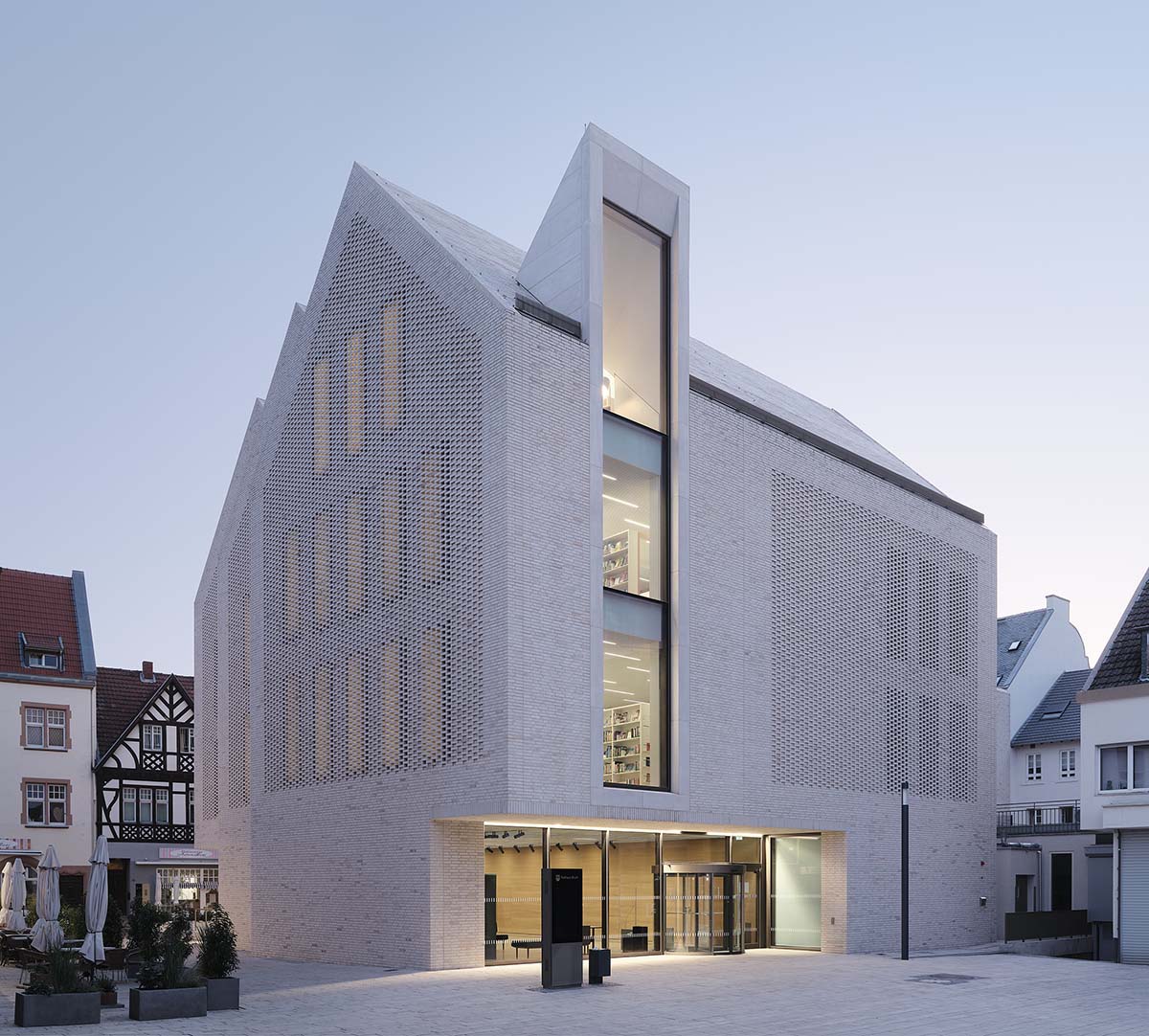The Word is Out: Danish Ministry Drops Microsoft, Goes Open Source
Key Takeaways
Meta and Yandex have been found guilty of secretly listening to localhost ports and using them to transfer sensitive data from Android devices.
The corporations use Meta Pixel and Yandex Metrica scripts to transfer cookies from browsers to local apps. Using incognito mode or a VPN can’t fully protect users against it.
A Meta spokesperson has called this a ‘miscommunication,’ which seems to be an attempt to underplay the situation.
Denmark’s Ministry of Digitalization has recently announced that it will leave the Microsoft ecosystem in favor of Linux and other open-source software.
Minister Caroline Stage Olsen revealed this in an interview with Politiken, the country’s leading newspaper. According to Olsen, the Ministry plans to switch half of its employees to Linux and LibreOffice by summer, and the rest by fall.
The announcement comes after Denmark’s largest cities – Copenhagen and Aarhus – made similar moves earlier this month.
Why the Danish Ministry of Digitalization Switched to Open-Source Software
The three main reasons Denmark is moving away from Microsoft are costs, politics, and security.
In the case of Aarhus, the city was able to slash its annual costs from 800K kroner to just 225K by replacing Microsoft with a German service provider.
The same is a pain point for Copenhagen, which saw its costs on Microsoft balloon from 313M kroner in 2018 to 538M kroner in 2023.
It’s also part of a broader move to increase its digital sovereignty. In her LinkedIn post, Olsen further explained that the strategy is not about isolation or digital nationalism, adding that they should not turn their backs completely on global tech companies like Microsoft.
Instead, it’s about avoiding being too dependent on these companies, which could prevent them from acting freely.
Then there’s politics. Since his reelection earlier this year, US President Donald Trump has repeatedly threatened to take over Greenland, an autonomous territory of Denmark.
In May, the Danish Foreign Minister Lars Løkke Rasmussen summoned the US ambassador regarding news that US spy agencies have been told to focus on the territory.
If the relationship between the two countries continues to erode, Trump can order Microsoft and other US tech companies to cut off Denmark from their services. After all, Microsoft and Facebook’s parent company Meta, have close ties to the US president after contributing M each for his inauguration in January.
Denmark Isn’t Alone: Other EU Countries Are Making Similar Moves
Denmark is only one of the growing number of European Unioncountries taking measures to become more digitally independent.
Germany’s Federal Digital Minister Karsten Wildberger emphasized the need to be more independent of global tech companies during the re:publica internet conference in May. He added that IT companies in the EU have the opportunity to create tech that is based on the region’s values.
Meanwhile, Bert Hubert, a technical advisor to the Dutch Electoral Council, wrote in February that ‘it is no longer safe to move our governments and societies to US clouds.’ He said that America is no longer a ‘reliable partner,’ making it risky to have the data of European governments and businesses at the mercy of US-based cloud providers.
Earlier this month, the chief prosecutor of the International Criminal Court, Karim Khan, experienced a disconnection from his Microsoft-based email account, sparking uproar across the region.
Speculation quickly arose that the incident was linked to sanctions previously imposed on the ICC by the Trump administration, an assertion Microsoft has denied.
Earlier this month, the chief prosecutor of the International Criminal Court, Karim Khan, disconnection from his Microsoft-based email account caused an uproar in the region. Some speculated that this was connected to sanctions imposed by Trump against the ICC, which Microsoft denied.
Weaning the EU Away from US Tech is Possible, But Challenges Lie Ahead
Change like this doesn’t happen overnight. Just finding, let alone developing, reliable alternatives to tools that have been part of daily workflows for decades, is a massive undertaking.
It will also take time for users to adapt to these new tools, especially when transitioning to an entirely new ecosystem. In Aarhus, for example, municipal staff initially viewed the shift to open source as a step down from the familiarity and functionality of Microsoft products.
Overall, these are only temporary hurdles. Momentum is building, with growing calls for digital independence from leaders like Ministers Olsen and Wildberger.
Initiatives such as the Digital Europe Programme, which seeks to reduce reliance on foreign systems and solutions, further accelerate this push. As a result, the EU’s transition could arrive sooner rather than later
As technology continues to evolve—from the return of 'dumbphones' to faster and sleeker computers—seasoned tech journalist, Cedric Solidon, continues to dedicate himself to writing stories that inform, empower, and connect with readers across all levels of digital literacy.
With 20 years of professional writing experience, this University of the Philippines Journalism graduate has carved out a niche as a trusted voice in tech media. Whether he's breaking down the latest advancements in cybersecurity or explaining how silicon-carbon batteries can extend your phone’s battery life, his writing remains rooted in clarity, curiosity, and utility.
Long before he was writing for Techreport, HP, Citrix, SAP, Globe Telecom, CyberGhost VPN, and ExpressVPN, Cedric's love for technology began at home courtesy of a Nintendo Family Computer and a stack of tech magazines.
Growing up, his days were often filled with sessions of Contra, Bomberman, Red Alert 2, and the criminally underrated Crusader: No Regret. But gaming wasn't his only gateway to tech.
He devoured every T3, PCMag, and PC Gamer issue he could get his hands on, often reading them cover to cover. It wasn’t long before he explored the early web in IRC chatrooms, online forums, and fledgling tech blogs, soaking in every byte of knowledge from the late '90s and early 2000s internet boom.
That fascination with tech didn’t just stick. It evolved into a full-blown calling.
After graduating with a degree in Journalism, he began his writing career at the dawn of Web 2.0. What started with small editorial roles and freelance gigs soon grew into a full-fledged career.
He has since collaborated with global tech leaders, lending his voice to content that bridges technical expertise with everyday usability. He’s also written annual reports for Globe Telecom and consumer-friendly guides for VPN companies like CyberGhost and ExpressVPN, empowering readers to understand the importance of digital privacy.
His versatility spans not just tech journalism but also technical writing. He once worked with a local tech company developing web and mobile apps for logistics firms, crafting documentation and communication materials that brought together user-friendliness with deep technical understanding. That experience sharpened his ability to break down dense, often jargon-heavy material into content that speaks clearly to both developers and decision-makers.
At the heart of his work lies a simple belief: technology should feel empowering, not intimidating. Even if the likes of smartphones and AI are now commonplace, he understands that there's still a knowledge gap, especially when it comes to hardware or the real-world benefits of new tools. His writing hopes to help close that gap.
Cedric’s writing style reflects that mission. It’s friendly without being fluffy and informative without being overwhelming. Whether writing for seasoned IT professionals or casual readers curious about the latest gadgets, he focuses on how a piece of technology can improve our lives, boost our productivity, or make our work more efficient. That human-first approach makes his content feel more like a conversation than a technical manual.
As his writing career progresses, his passion for tech journalism remains as strong as ever. With the growing need for accessible, responsible tech communication, he sees his role not just as a journalist but as a guide who helps readers navigate a digital world that’s often as confusing as it is exciting.
From reviewing the latest devices to unpacking global tech trends, Cedric isn’t just reporting on the future; he’s helping to write it.
View all articles by Cedric Solidon
Our editorial process
The Tech Report editorial policy is centered on providing helpful, accurate content that offers real value to our readers. We only work with experienced writers who have specific knowledge in the topics they cover, including latest developments in technology, online privacy, cryptocurrencies, software, and more. Our editorial policy ensures that each topic is researched and curated by our in-house editors. We maintain rigorous journalistic standards, and every article is 100% written by real authors.
#word #out #danish #ministry #dropsThe Word is Out: Danish Ministry Drops Microsoft, Goes Open Source
Key Takeaways
Meta and Yandex have been found guilty of secretly listening to localhost ports and using them to transfer sensitive data from Android devices.
The corporations use Meta Pixel and Yandex Metrica scripts to transfer cookies from browsers to local apps. Using incognito mode or a VPN can’t fully protect users against it.
A Meta spokesperson has called this a ‘miscommunication,’ which seems to be an attempt to underplay the situation.
Denmark’s Ministry of Digitalization has recently announced that it will leave the Microsoft ecosystem in favor of Linux and other open-source software.
Minister Caroline Stage Olsen revealed this in an interview with Politiken, the country’s leading newspaper. According to Olsen, the Ministry plans to switch half of its employees to Linux and LibreOffice by summer, and the rest by fall.
The announcement comes after Denmark’s largest cities – Copenhagen and Aarhus – made similar moves earlier this month.
Why the Danish Ministry of Digitalization Switched to Open-Source Software
The three main reasons Denmark is moving away from Microsoft are costs, politics, and security.
In the case of Aarhus, the city was able to slash its annual costs from 800K kroner to just 225K by replacing Microsoft with a German service provider.
The same is a pain point for Copenhagen, which saw its costs on Microsoft balloon from 313M kroner in 2018 to 538M kroner in 2023.
It’s also part of a broader move to increase its digital sovereignty. In her LinkedIn post, Olsen further explained that the strategy is not about isolation or digital nationalism, adding that they should not turn their backs completely on global tech companies like Microsoft.
Instead, it’s about avoiding being too dependent on these companies, which could prevent them from acting freely.
Then there’s politics. Since his reelection earlier this year, US President Donald Trump has repeatedly threatened to take over Greenland, an autonomous territory of Denmark.
In May, the Danish Foreign Minister Lars Løkke Rasmussen summoned the US ambassador regarding news that US spy agencies have been told to focus on the territory.
If the relationship between the two countries continues to erode, Trump can order Microsoft and other US tech companies to cut off Denmark from their services. After all, Microsoft and Facebook’s parent company Meta, have close ties to the US president after contributing M each for his inauguration in January.
Denmark Isn’t Alone: Other EU Countries Are Making Similar Moves
Denmark is only one of the growing number of European Unioncountries taking measures to become more digitally independent.
Germany’s Federal Digital Minister Karsten Wildberger emphasized the need to be more independent of global tech companies during the re:publica internet conference in May. He added that IT companies in the EU have the opportunity to create tech that is based on the region’s values.
Meanwhile, Bert Hubert, a technical advisor to the Dutch Electoral Council, wrote in February that ‘it is no longer safe to move our governments and societies to US clouds.’ He said that America is no longer a ‘reliable partner,’ making it risky to have the data of European governments and businesses at the mercy of US-based cloud providers.
Earlier this month, the chief prosecutor of the International Criminal Court, Karim Khan, experienced a disconnection from his Microsoft-based email account, sparking uproar across the region.
Speculation quickly arose that the incident was linked to sanctions previously imposed on the ICC by the Trump administration, an assertion Microsoft has denied.
Earlier this month, the chief prosecutor of the International Criminal Court, Karim Khan, disconnection from his Microsoft-based email account caused an uproar in the region. Some speculated that this was connected to sanctions imposed by Trump against the ICC, which Microsoft denied.
Weaning the EU Away from US Tech is Possible, But Challenges Lie Ahead
Change like this doesn’t happen overnight. Just finding, let alone developing, reliable alternatives to tools that have been part of daily workflows for decades, is a massive undertaking.
It will also take time for users to adapt to these new tools, especially when transitioning to an entirely new ecosystem. In Aarhus, for example, municipal staff initially viewed the shift to open source as a step down from the familiarity and functionality of Microsoft products.
Overall, these are only temporary hurdles. Momentum is building, with growing calls for digital independence from leaders like Ministers Olsen and Wildberger.
Initiatives such as the Digital Europe Programme, which seeks to reduce reliance on foreign systems and solutions, further accelerate this push. As a result, the EU’s transition could arrive sooner rather than later
As technology continues to evolve—from the return of 'dumbphones' to faster and sleeker computers—seasoned tech journalist, Cedric Solidon, continues to dedicate himself to writing stories that inform, empower, and connect with readers across all levels of digital literacy.
With 20 years of professional writing experience, this University of the Philippines Journalism graduate has carved out a niche as a trusted voice in tech media. Whether he's breaking down the latest advancements in cybersecurity or explaining how silicon-carbon batteries can extend your phone’s battery life, his writing remains rooted in clarity, curiosity, and utility.
Long before he was writing for Techreport, HP, Citrix, SAP, Globe Telecom, CyberGhost VPN, and ExpressVPN, Cedric's love for technology began at home courtesy of a Nintendo Family Computer and a stack of tech magazines.
Growing up, his days were often filled with sessions of Contra, Bomberman, Red Alert 2, and the criminally underrated Crusader: No Regret. But gaming wasn't his only gateway to tech.
He devoured every T3, PCMag, and PC Gamer issue he could get his hands on, often reading them cover to cover. It wasn’t long before he explored the early web in IRC chatrooms, online forums, and fledgling tech blogs, soaking in every byte of knowledge from the late '90s and early 2000s internet boom.
That fascination with tech didn’t just stick. It evolved into a full-blown calling.
After graduating with a degree in Journalism, he began his writing career at the dawn of Web 2.0. What started with small editorial roles and freelance gigs soon grew into a full-fledged career.
He has since collaborated with global tech leaders, lending his voice to content that bridges technical expertise with everyday usability. He’s also written annual reports for Globe Telecom and consumer-friendly guides for VPN companies like CyberGhost and ExpressVPN, empowering readers to understand the importance of digital privacy.
His versatility spans not just tech journalism but also technical writing. He once worked with a local tech company developing web and mobile apps for logistics firms, crafting documentation and communication materials that brought together user-friendliness with deep technical understanding. That experience sharpened his ability to break down dense, often jargon-heavy material into content that speaks clearly to both developers and decision-makers.
At the heart of his work lies a simple belief: technology should feel empowering, not intimidating. Even if the likes of smartphones and AI are now commonplace, he understands that there's still a knowledge gap, especially when it comes to hardware or the real-world benefits of new tools. His writing hopes to help close that gap.
Cedric’s writing style reflects that mission. It’s friendly without being fluffy and informative without being overwhelming. Whether writing for seasoned IT professionals or casual readers curious about the latest gadgets, he focuses on how a piece of technology can improve our lives, boost our productivity, or make our work more efficient. That human-first approach makes his content feel more like a conversation than a technical manual.
As his writing career progresses, his passion for tech journalism remains as strong as ever. With the growing need for accessible, responsible tech communication, he sees his role not just as a journalist but as a guide who helps readers navigate a digital world that’s often as confusing as it is exciting.
From reviewing the latest devices to unpacking global tech trends, Cedric isn’t just reporting on the future; he’s helping to write it.
View all articles by Cedric Solidon
Our editorial process
The Tech Report editorial policy is centered on providing helpful, accurate content that offers real value to our readers. We only work with experienced writers who have specific knowledge in the topics they cover, including latest developments in technology, online privacy, cryptocurrencies, software, and more. Our editorial policy ensures that each topic is researched and curated by our in-house editors. We maintain rigorous journalistic standards, and every article is 100% written by real authors.
#word #out #danish #ministry #drops













